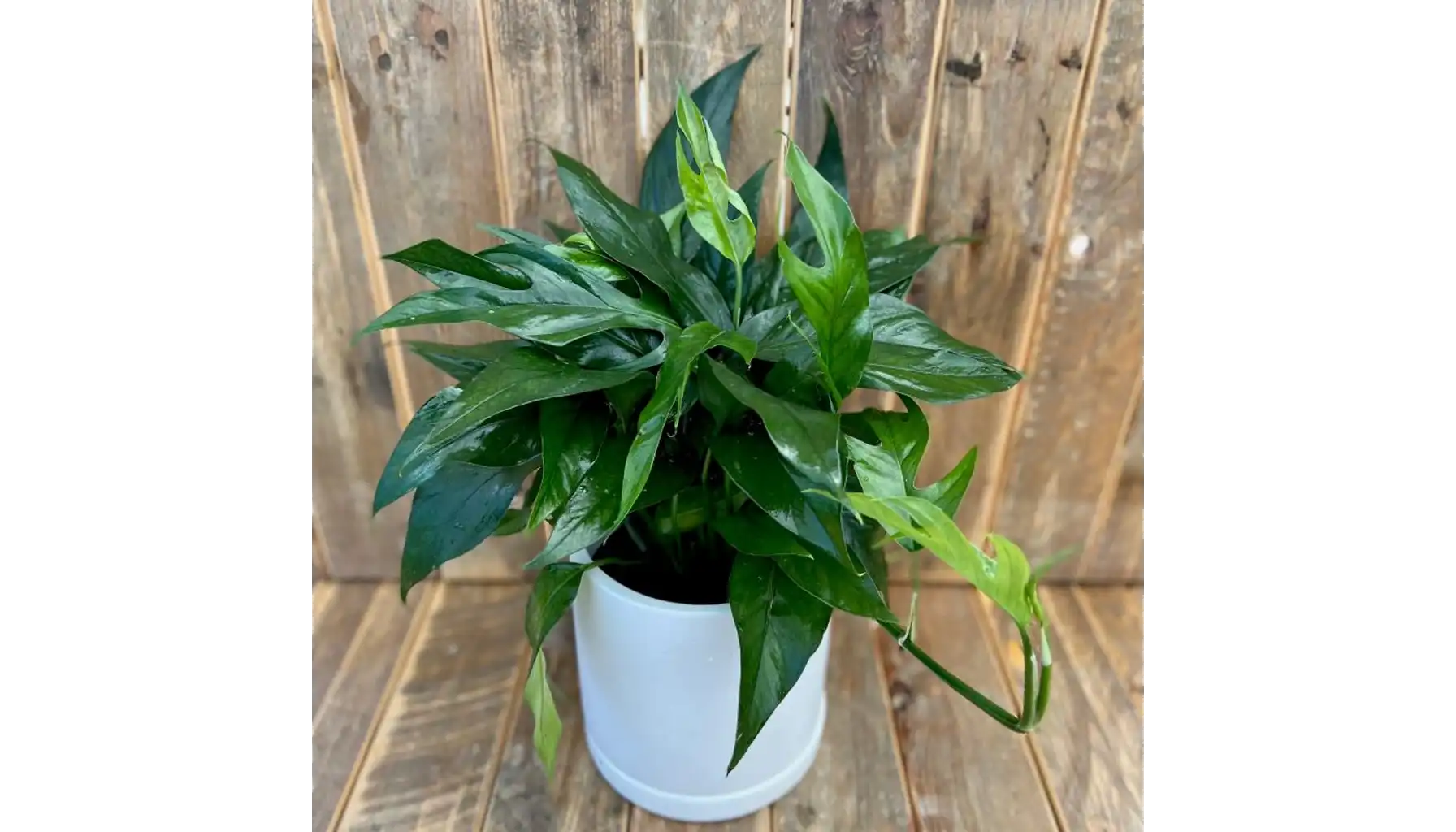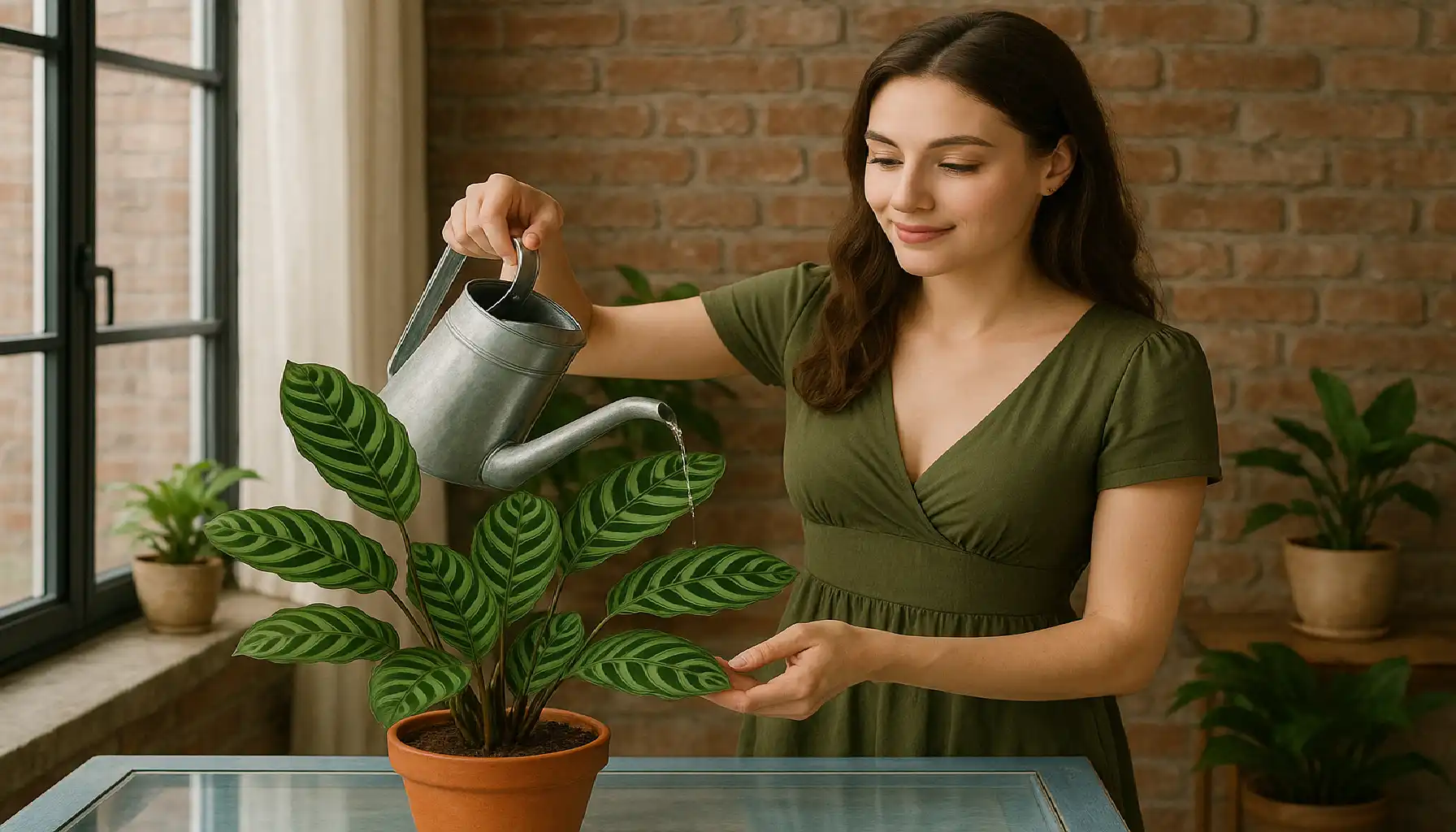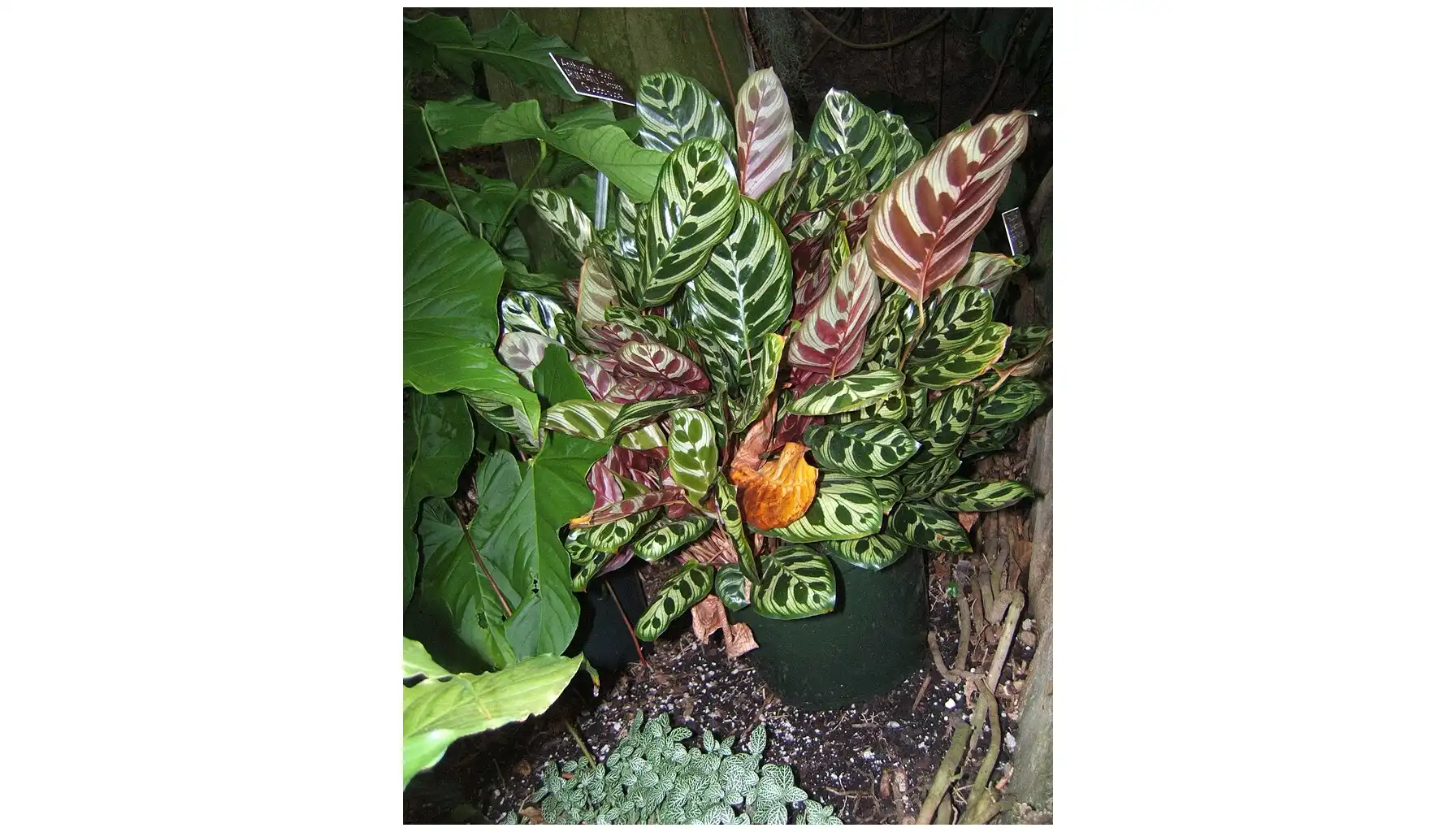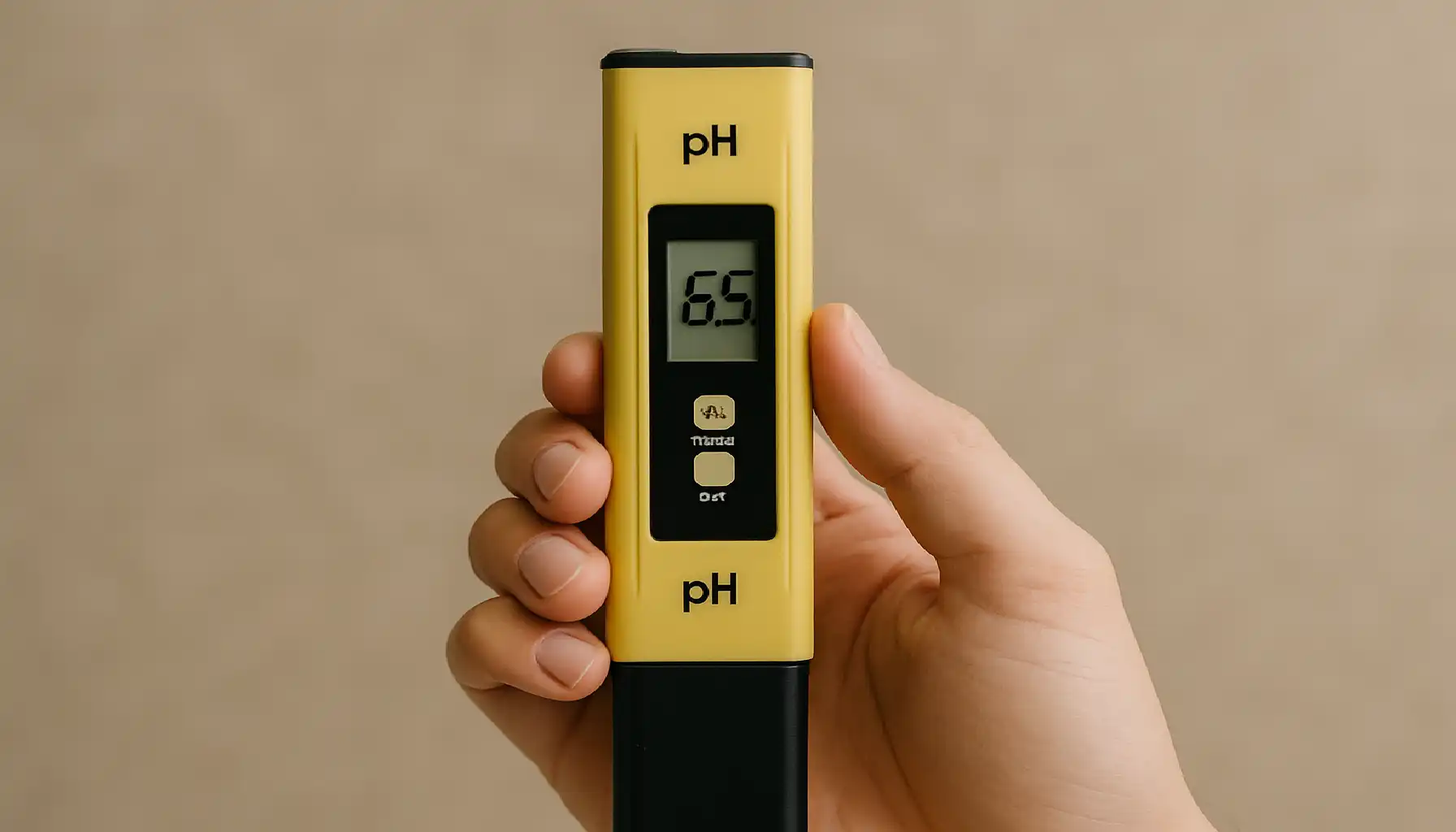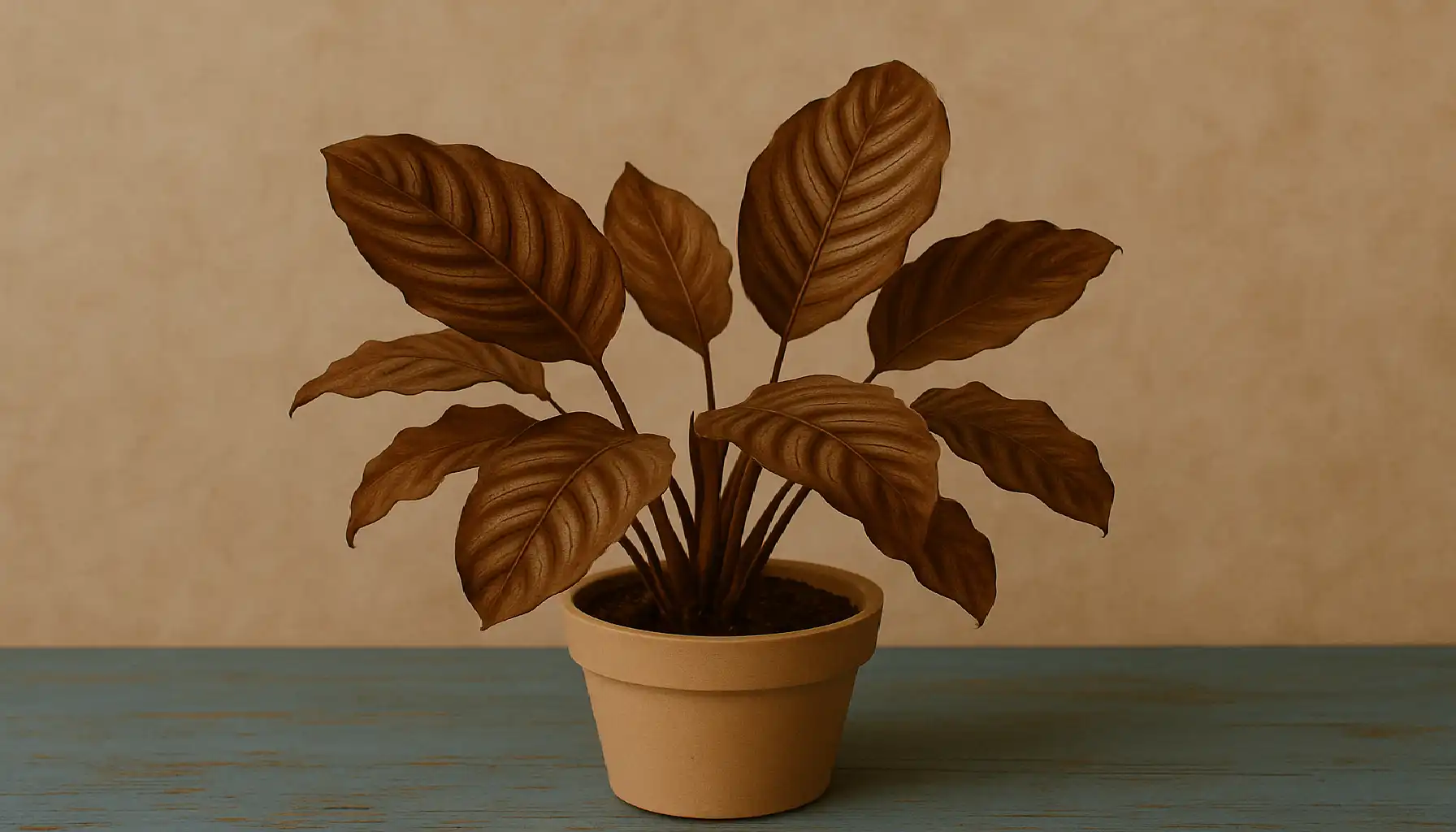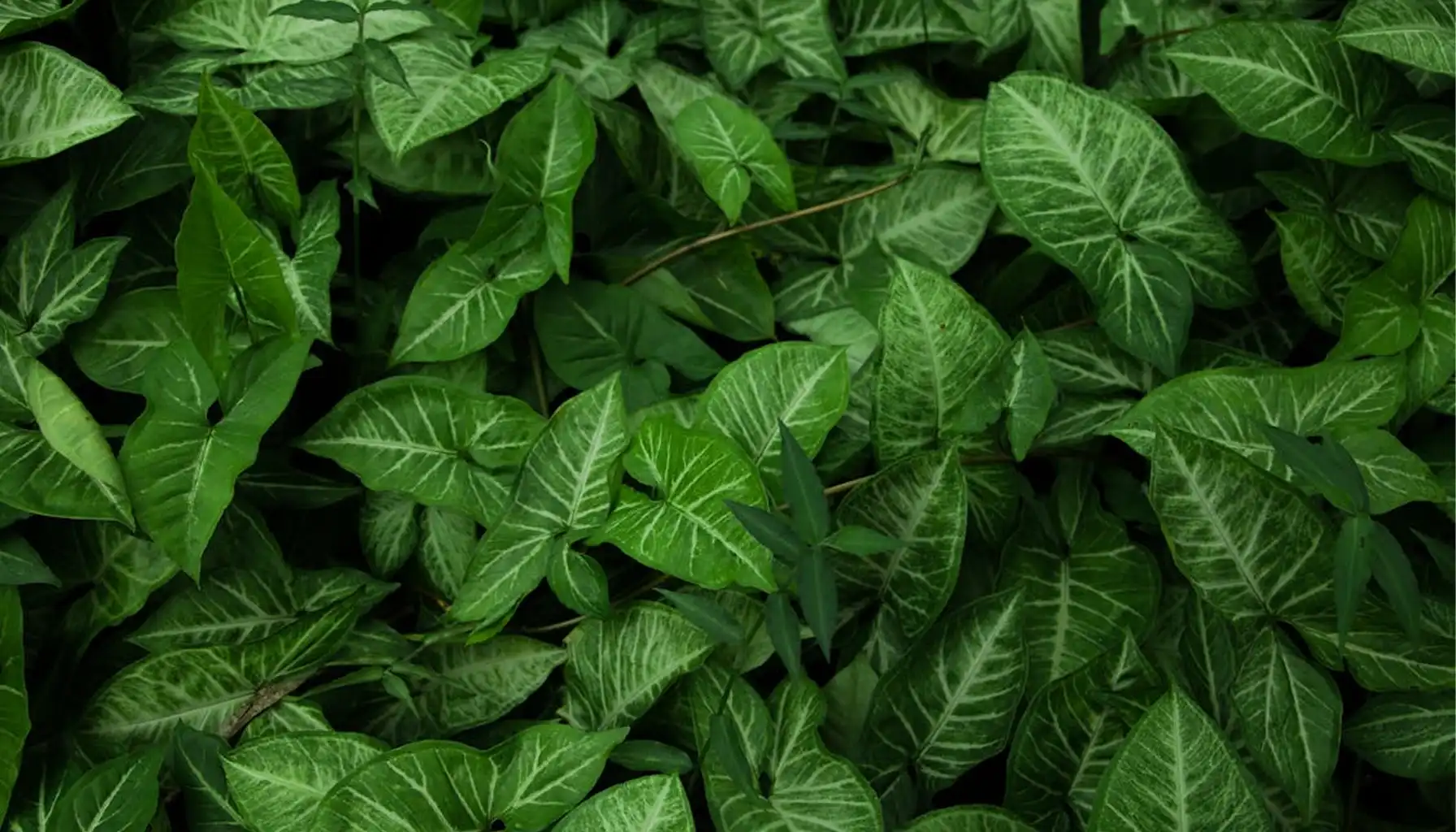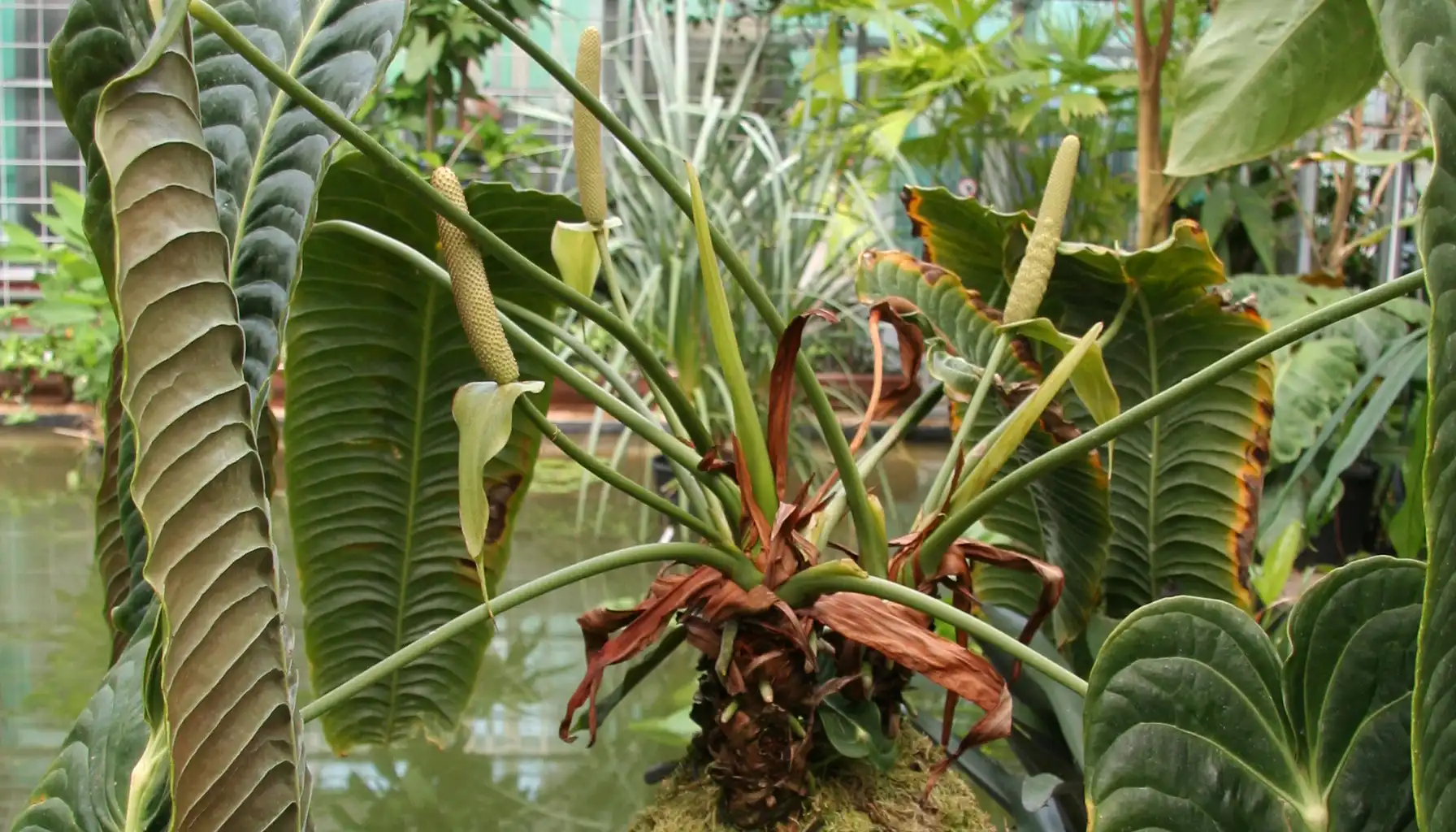.Do you know how to care for a peacock plant properly? Calathea Makoyana is a beautiful tropical example that is appreciated for its amazing, patterned leaves. It is often chosen for home decoration, but in order for it to delight you with its beauty, you need to know several important rules of care. You can learn about peacock plant propagation to make new plants via the plant identification app.
Peacock Plant VS Prayer Plant
Calathea Macoyana (the peacock plant scientific name) is a species of plants from the rainforests of Brazil. Its leaves really look like peacock prayer plant feathers: light green with dark green spots, and the underside of the leaf often has a beautiful purple hue. The underside of a purple peacock plant leaf is very colorful. The peacock plant flower is usually small and white.
Why "Prayer"?
One of the most interesting features of Calathea is its leaf movement. In the evening, when it gets dark, its leaves rise up, as if it is "praying" or folding its hands. And in the morning, when the sun rises, they descend again and spread out. It's a fascinating sight that happens every day. Scientists believe that this helps to retain moisture at night and maximize light capture during the day.
In order for your calathea to grow healthy and beautiful, you need to create conditions for it that are close to natural tropical conditions. This guide explains how to take care of a peacock plant.
Light
Calathea loves light, but direct sunlight is harmful to them. It can burn leaves, leaving brown spots on them. Imagine a forest: calathea grows under the crowns of large trees, where diffused light penetrates. As for the orbit peacock plant, it has distinct round patterns on its leaves.
Perfect location: East or north window, where there is a bright but diffused peacock plant light requirements. If you have a south or west window, put the pot away from the window or use light curtains to diffuse the light. In good conditions, the peacock fern plant has delicate, colorful fronds.
Signs of improper lighting
Too much light: Peacock plant yellow leaves can mean too much light. But the bronze peacock plant has darker, richer leaf colors.
Too little light: The patterns on the leaves become less pronounced, and peacock plant growth slows down.
Watering
Calathea likes when the soil is constantly slightly moist, but not wet. They are very sensitive to both drying out and stagnation of water.
How to water: Water when the top layer of soil (about 2-3 cm) dries. Use filtered, distilled, or rainwater. The peacock plant calathea is very sensitive to chlorine and minerals found in tap water. If there is no other water, put tap water in an open container and let it stand for 24 hours so that the chlorine evaporates.
Amount of water: Water abundantly until the water starts to flow out of the drainage holes. Make sure to drain the excess water from the pan.
Frequency: In summer, it will probably need to be watered 2-3 times a week, in winter — less often, about once a week. Always check the soil before peacock plant watering.
Signs of improper watering
Insufficient watering: Leaves curl, edges turn brown and crisp.
Excessive watering: Leaves turn yellow, become sluggish, stems are soft. This can lead to rotting of the roots.
Humidity
Originally from the tropics, it is used to very high humidity. The dry air in our apartments, especially in winter because of the heating, is the main enemy of calathea.
Air humidifier: This is the best way. Place a humidifier next to the plant.
Tray with pebbles and water: Place the pot on a tray with wet pebbles. Make sure that the bottom of the pot does not touch the water to avoid waterlogging the roots. It will create a microclimate around the plant.
Spraying: Spray the leaves regularly with soft water (the same as for watering). Do this several times a day, especially in hot weather or during the heating season. Additionally, the peacock rattlesnake plant has long, patterned leaves.
Grouping: Place the peacock calathea plant next to other pots, so they will create a moist environment for each other.
Signs of low humidity
If your peacock plant leaves are curling, it needs more water. This is the most common problem with calathea.
Temperature
Calathea is a thermophilic one. They don't like sudden temperature changes and drafts. But the fusion white peacock plant has stunning white and green leaves, and it’s alright.
Perfect temperature: From 18°C to 27°C.
What to avoid: Temperatures below 15°C and drafts, especially from open windows in winter or from the air conditioner in summer. Sudden temperature changes can damage the leaves.
Soil
Calathea needs soil that holds moisture well, but at the same time allows water and air to pass through perfectly.
The ideal composition: A mixture for aromatic examples or universal soil mixed with perlite, vermiculite, coconut fiber or coarse sand to improve drainage. You can add a little peat to retain moisture.
Soil pH: Calathea prefers slightly acidic peacock plant soil (pH 6.0-7.0).
Fertilizer
Calathea does not need frequent fertilizing. Too much fertilizer can harm them.
When to fertilize: During the period of active growth (spring and summer) every 2-4 weeks.
How to fertilize: Use a liquid complex fertilizer for indoor plants, diluted to half or a quarter of the recommended dose.
When not to fertilize: In autumn and winter, when growth slows down, top dressing is stopped.
Pot
How to care for peacock plant? Choose a pot with mandatory drainage holes at the bottom. This is extremely important to prevent water stagnation and root rot. The material of the pot, plastic or ceramic, is not as important as the presence of drainage. With proper care this peacock flower plant has very colorful blooms.
Replanting
Do it to calathea only when it outgrows its pot, usually once every 1-2 years in spring. Healthy peacock plant roots are white and firm.
How to do it: Carefully remove the plant from the old pot, taking care not to damage the roots. Put it into a slightly larger pot (2-4 cm larger in diameter) using fresh, suitable soil.
Propagation: You can split the rhizome to get new plants. Make sure that each part has roots and at least a few leaves.
Pests and Diseases
Calathea can be attacked by common indoor pests:
Spider mite: Most often appears due to dry air. It looks like small dots on leaves and a thin spider web. But at the same time, the white peacock butterfly host plant helps butterfly larvae grow.
Scab, mealybug: Less common, but may appear.
Pest control: Inspect the leaves regularly. If pests are detected, wipe the leaves with a soapy solution or use insecticides specifically designed for indoor plants. Increasing humidity often helps prevent the appearance of spider mites.
Diseases: Mainly related to improper care (waterlogging, low humidity). It also may happen if a large peacock plant is in the small pot.
Brown edges of leaves: Almost always due to insufficient humidity or the use of hard water.
Yellowing leaves, lethargy: Most often due to waterlogging. But some varieties can be called a red peacock plant, and it’s normal.
Twisting of leaves: Lack of moisture in the soil or too bright light.
Calathea Peacock Plant Care: Key Recommendations
Consistency: Calatheans love consistency. Try not to move them often and maintain stable conditions.
Clean the leaves: Wipe the leaves regularly with a damp, soft cloth to remove dust. This will not only improve the appearance, but also allow the leaves to "breathe" better.
Patience: Sometimes it takes a while to understand the needs of your plant. Don't worry if something goes wrong right away.
Important Note: Many people worry about their active pets, because they like to chew leaves. Of course, the owners are also afraid that their pet may break the pot, but this is secondary. We answer the most popular question.: Is peacock plant toxic to cats? No, it is generally considered non-toxic to cats.
Following these recommendations, you will grow, for example, a peacock ginger plant in the proper way, and it will become a real decoration of your home and will delight you with its exotic leaves. And it's great that the peacock plant is pet safe.
AI Plant Finder Related Posts:
